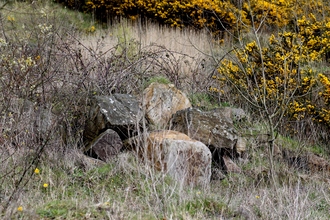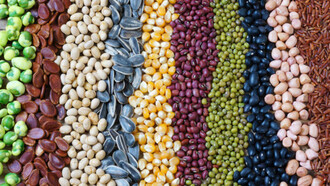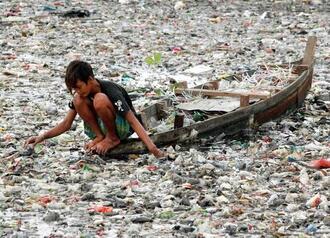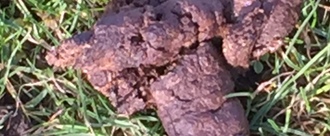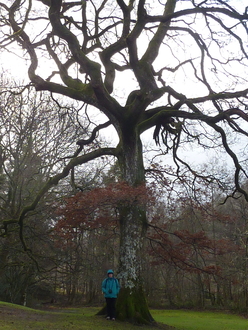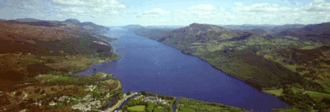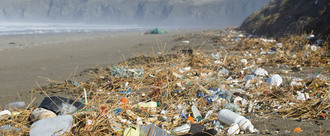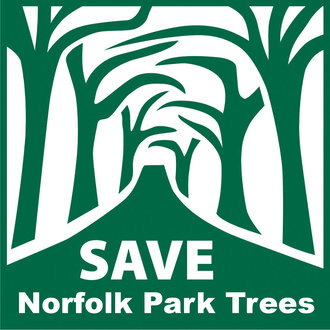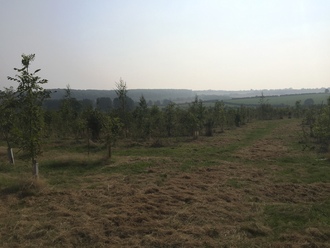-
Stop the Tip - Save the VoidThis site is now a unique wild life habitat containing a rich mosaic of grass and shale. It would be nigh on impossible to replicate what nature has produced here. Leaving aside wildlife, the real threat from this application is to the health and well being of local residents which is very serious. The nearby M1 motorway is having a speed restriction imposed to try to reduce high pollution levels another 200 wagon (all diesel) movements a day from this site will only add to a that toxic mix.992 of 1,000 SignaturesCreated by Willy Lane
-
Say No to Wylfa BThe nuclear option for electricity is dirty and dangerous. On Anglesey lets focus on renewable to generate more jobs and a sustainable future without the risk to the locality and the planet, with no radioactive waste. Talk to the people of Trawsfynydd, they thought it was safe now look at all the families devastated by cancer, a radioactive lake and an eyesore there for a thousand years.679 of 800 SignaturesCreated by Richard Haig
-
We do not want GM foods to be sold in the UK from the US.Act to stop roundup used on crops.Leaving the EU and having a trade deal with the US means one thing for certain we will be buying foods that have been Genetically modified from the US and we will also be growing GM foods in the UK.Meat from the US like chicken and pork are produced on factory farms,and chlorinated chicken and pork fed with GMO grains.Bad for us it will give us cancer and bad for the environment.Moves are already afoot to grow crops here. http://www.dailymail.co.uk/sciencetech/article-4179870/Genetically-modified-wheat-grown-UK.html http://www.collective-evolution.com/2014/07/15/new-study-links-gmos-to-cancer-liverkidney-damage-severe-hormonal-disruption/ http://articles.mercola.com/sites/articles/archive/2016/09/24/transgenic-wars-gmo.aspx http://www.healthline.com/health-news/does-roundup-cause-cancer Cancer rates in the west are rising,it is said that from 1in 4 now i in 2 people will develop cancer.We are being bombarded with junk foods and added chemical to our foods but also our crops are sprayed with glysophate,a pesticide used on every crop non organically grown.This pesticide causes cancer and should be banned.We do not want GMO foods which are laced with this pesticide and we do not want it to continue to be legal to use this pesticide. Say No to Roundup(glysophate)and say No to genetically modified foods,sign this petition.131 of 200 SignaturesCreated by Katie Nikiforou
-
DRASTIC PLASTIC UKPlastic, is not the disposable, one use magic material we were led to believe in the 1950's. The miraculous cheap, lightweight, disposable, durable substance, was years later, discovered to be toxic, none biodegradable, and is having a huge global negative effect for both humans and animals. Plastic never disappears into nothing, it is always there, breaking down into small micro plastics, which attract toxic, harmful chemicals damaging all life on the planet including ourselves. Fish in the oceans, are consuming, these meaning that we are too. It's killing marine plant life which provides 70% of the earths oxygen, after all, the world is mostly blue, not green. We've produced more plastic in the past ten years than we have in our entire history with not even half of it being recycled. 8 million tones of plastic being put in the ocean a year. Other countries across the world are taking the lead with plastic bag bans, plastic cutlery and plates bans and the 'zero waste Europe' network installing plastic bottle deposit and recycling schemes, why are we so behind!? Further reading... FEW FACTS It’s a durable, versatile material ideal for many applications, however, over 50% of it is used once then thrown into landfills or the ocean. More than 8 million tons of plastic is dumped in our oceans every year 300 million tonnes are produced every year, producing more over the last ten years than during the whole of the last century. To produce one plastic bottle, it takes 6 litres of water. Which is six times the amount of water that’s going to be put inside it! Plastic production accounts for 8% of the world’s oil preserves. ENVIRONMENTAL IMPACT Fish in the north pacific ingest 12,000 to 24,000 of plastic per year. 97.5% of Laysan Albatross chicks (Sea birds) have plastic in their stomach causing death and potential extinction. The ratio of plastic to plankton in the Mediterranean Sea is 1 to 2. In the most polluted places there’s six times more plastic than plankton. 1 in 3 species of marine species are endangered from entangled in marine litter and ingestion. Plastics toxic emissions are damaging marine eco systems which are dependent on marine plants. These plants produce 70% of the earths oxygen and remove 40% carbon. This has resulted in over 405 dead zones in the world, 5000 sq miles of the gulf of Mexico almost devoid of life being one of them. HOW THIS EFFECTS HUMAN HEALTH? Scientific research has proven plastic releases harmful chemicals. Micro plastic in the ocean absorb high levels of pollutants and dangerous endocrine disrupting chemicals, which can cause cancerous tumours, birth defects, infertility, developmental disorders and anything else hormone related. Fish that we eat are eating these plastics meaning it’s getting into our systems as well. NOT DISPOSABLE You can never ‘throw plastic away’, it’s always there. Either in the form of a smog in the ocean, or shipped to different countries. Since recycling is not a very profitable market. China banned being sold plastic in 2016, so now it gets exported to places like India where people sort through endless rivers of rubbish to find pieces to sell. The rest makes it was down the river into the sea. WEBSITE REFERENCES http://www.greenseas.org/ http://www.plasticoceans.org/ https://www.5gyres.org/229 of 300 SignaturesCreated by Hannah Elizabeth White
-
Dog Fouling PrestwickThe seafront at Prestwick and the roads leading down to it are constantly fouled. This impacts on the whole community and gives a bad name to the majority of dog owners who take responsibility for their animals.146 of 200 SignaturesCreated by Elissa Wilson
-
Help Us Save Our Special TreesI believe that the public display of planning permission notices should be a compulsory part of the planning process for applications to carry out work on trees with Tree Protection Orders and in Local Conservation Areas. At the moment there is no 'requirement' to display such public notices. This means that the first local people know of work to these special trees is when the work actually starts. This is likely to be long after the window of opportunity for comment as part of the planning process has passed. I became aware of this issue recently when I was looking on our local planning authority website after hearing a rumour of tree work in our local park. It was only then that I found out that one of the trees to be felled was a much loved local Oak. The park is in a Conservation Area. I felt devastated that it was already too late to have any input into the application. I hadn't known to look on the planning website beforehand to check on tree work as I had assumed any notices would be posted nearby as with other types of planning application. I tried everything I could think of to save the tree but all to no avail. I doesn't seem right to me that trees with supposedly protected status have so little protection in practice and I feel that others will also be shocked to learn that permission can be given to fell these special trees without consulting or even informing local people at all. Please sign my petition to help protect our special trees for future generations and wildlife to enjoy.1,630 of 2,000 SignaturesCreated by Lesley Flood
-
S.O.S SAVE OUR SEAS and BEACHESI have visited Turtle beaches in Northern and Southern Cyprus, and many other countries around the world. I have been very upset in finding rubbish of all sorts floating in the sea. Some of these are dangerously small particles such as broken down plastic, and bottle tops and other types of plastic which break into tiny pieces and get into the eco - system and into the stomachs of marine life around the world, and cause great pain, distress and even death. This is becoming very serious as the particles are so small they are now found in the stomachs of plackton pretty well the smallest form of life in our seas, and is a staple diet of many marine animals including whales. In the long term this will do untold damage not only to the marine life, but it will also get into our food chain with unknown consequences. Turtles are beautiful creatures and live all of their lives out at sea from the moment they hatch. Only one in a thousand will survive out in the oceans, and one of the things that will kill them on a regular basis are plastic bags. They feed on jelly fish, as part of their diet, and when they see a plastic bag they think it's a jellyfish and will eat it with diar and very sad consequences. The sea is the most wonderful enviroment for all of us. Not only providing us with fish to eat, but the most wonderful holidays with swimming, surfing, scenery, sailing, sandy beaches, rock pools the list is endless. Not only that, it helps to control the temperature of our world, and yet we treat it with distain. There is so much pollution and rubbish tipped into the oceas everyday, that more and more marine life is being affected. One of the main culprits is body scrubs and toothpastes. They contain thousands of small plastic beads which find their way into the sea, and then consumed by marine life. So to help please DO NOT buy these products unless the ingredients are peach kernels or sugar instead. More needs to be done in using plastic bags for fruit and vegetables at the supermarkets. It's been a start to pay for plastic carrier bags, but these small plastic bags in the fruit and veg area, are just as dangerous in our countryside and oceans, please encourage the supermarkets to use brown paper bags, which are far better and don't make the fruit and veg sweat, and are recyclable. The government is banning some products but not all, and a great more needs to be done, as there are more products out there which use plastic including cleaning products. If you love our planet, and everything about nature, then PLEASE sign my petition so we can help our beautiful oceans and everything that depends on it to live, including us, and our grandchildren to come. A BIG and heartfelt THANK YOU.100 of 200 SignaturesCreated by Jill Fergusson-Sharp
-
STOP Wind Turbines at Loch Ness & Glen UrquhartLoch Ness is under threat from over 500 wind turbines approved and in the planning stage within a 22 mile radius. Loch Ness and the Great Glen are now prime targets for windfarm developers. There are calls to classify Loch Ness and the Great Glen a World Heritage Site because of their international importance. They are Scotland’s second most popular tourist draw. Yet, environmental destruction could threaten some of the Highland’s most scenic areas. Loch Ness and environs and the Great Glen are under threat as never before from the attention of wind farm companies. You can make a difference by signing a petition to the Scottish Parliament pleading to save Glen Urquhart, Loch Ness and the Great Glen. These are the world’s most beautiful landscapes and contain some of Europe’s last remaining wild land. http://www.savelochness.com/main.html http://www.stop-turbines-at-glenurquhart.co.uk/index.html http://raptorpolitics.org.uk/2015/04/03/loch-ness-anti-wind-farm-campaigners-speak-out-about-new-turbine-proposals-for-this-scenic-scottish-jewel/ Windfarm developers Force9 have now appealed this ruling to turn down the windfarm at local authority level. They have now appealed to the Scottish Government. https://www.pressandjournal.co.uk/fp/news/highlands/914554/victory-for-campaign-after-windfarm-above-loch-ness-is-turned-down/ https://www.johnmuirtrust.org/about/resources/774-cnoc-an-eas-wind-farm247 of 300 SignaturesCreated by Tj van Loon
-
Save Portavoe Reservoir from Privatisation!Portavoe holds a special place in our hearts, and it would be devastating to lose such a haven of beauty and tranquility. The decommissioning of our open reservoirs and placing them onto the open market has quite rightly caused outcry from us, the public, who have enjoyed them for so many years. A local property developer has won a recent High Court battle with Northern Ireland Water in his wider bid to buy lands, and if successful could completely ban the public from them. NI Waters fought the case at the High Court as hard as they could, but the judgement could be subject to appeal. Ards/North Down Councils had also expressed interest in purchasing the land for the benefit of all residents. Please sign the petition to show your support for keeping Portavoe accessible to all! For more information please follow "Friends of Portavoe" page on Facebook.3,242 of 4,000 SignaturesCreated by Olde Richard
-
Bring back bottle deposits to stop plastic pollution in our oceans.In the UK we use a staggering 38.5 million single-use plastic bottles and a further 58 million cans every day! Only half of these are recycled, so it’s no surprise that many of these end up on our beaches and in our oceans. Plastic bottles take 450 years to break down, killing marine life, harming the coastal ecosystem and ruining our beaches. Placing a small deposit on plastic bottles and cans would dramatically increase recycling and reduce marine plastic pollution. This petition has been set up by Surfers Against Sewage, a marine conservation charity. Find out more about Surfers Against Sewage here: www.sas.org.uk For more information on deposit return systems please visit Surfers Against Sewage’s Message In A Bottle campaign site. https://www.sas.org.uk/messageinabottle/ A delegation from Surfers Against Sewage will deliver the petition signatures to the Governments in Westminster (London), Holyrood (Edinburgh), Senedd (Cardiff) and Stormont (Belfast).331,326 of 400,000 Signatures
-
Save the Norfolk Park 6Between August 2012 and January 2016 Amey the Council contractor felled over 3500 trees across Sheffield. Now they are planning to chop down many of our local street trees. While some of these trees are near the end of their life and should be replaced, many others are mature healthy trees that help to keep the air clean (1), protect our homes from flooding (2) and provide a habitat for local wildlife (3), as well as making our streets nicer and healthier places to live (4). Mature trees are particularly good at filtering out pollution (5), cooling the air in summer (6) and maintaining nature's delicate balance (7). Four of the trees are said to be damaging the pavement and are therefore discriminatory to disabled people and those using pushchairs. We believe the damage is minor and does not significantly impair accessibility for disabled people, or the use of prams and pushchairs. Sensitive engineering solutions (8), such as use of flexi-pave and/or pavement restructuring and localized remediation near trees, with kerb stones sculpted to accommodate root morphology, would represent a sustainable solution to perceived problems. The other trees are said to be diseased or dangerous. Our independent ecologist says with sensible management the above 11 trees will thrive for many years and should definitely be saved. The Council carried out a survey of households to see if people wanted to save the trees. This was deeply flawed as many houses and in some cases whole streets were missed out. References (1) Karl, T., Harley, P., Emmons, L., Thornton, B., Guenther, A., Basu, C., & Jardine, K. (2010). Efficient atmospheric cleansing of oxidized organic trace gases by vegetation. Science, 330(6005), 816-819.http://www.sciencemag.org/content/330/6005/816.short Escobedo, F., Kroeger, T. & Wagner, J. (2011). Urban forests and pollution mitigation: analyzing ecosystem services and disservices. Environmental Pollution, Volume 159, pp. 2078-2087.http://scholar.google.co.uk/scholar?cluster=14928633190131047233&hl=en&as_sdt=0,5 (2) Trees and Design Action Group (2012). Trees in the Townscape: A Guide for Decision Makers, s.l.: Trees and Design Action Group.http://www.tdag.org.uk/trees-in-the-townscape.html Construction Industry Research and Information Association, 2013. CIRIA Research Project RP993: Demonstrating the multiple benefits of SuDS – A business case (Phase 2). Draft Literature Review. [Online] Available at: http://www.susdrain.org [Accessed 25 May 2015].http://www.susdrain.org/files/resources/ciria_guidance/ciria_rp993_literature_review_october_2013_.pdf (3) Ewers, R. M., & Didham, R. K. (2006). Confounding factors in the detection of species responses to habitat fragmentation. Biological Reviews, 81(01), p. 117-142. http://scholar.google.co.uk/scholar?cluster=1003233194462145743&hl=en&as_sdt=0,5 Gilbert‐Norton, L., Wilson, R., Stevens, J. R., & Beard, K. H. (2010). A Meta‐Analytic Review of Corridor Effectiveness. Conservation Biology, 24(3), p. 660-668. http://onlinelibrary.wiley.com/doi/10.1111/j.1523-1739.2010.01450.x/full (4)Sarajevs, V. (2011). Health Benefits of Street Trees, Farnham: Forest Research. http://www.forestry.gov.uk/fr/INFD-8JCEJH Williams, K., O'Brien, L. & Stewart, A.. (2013). Urban health and urban forestry: how can forest management agencies help?. Arboricultural Journal: The International Journal of Urban Forestry, Volume 35, pp. 119-133.http://www.tandfonline.com/doi/pdf/10.1080/03071375.2013.852358 (4) Shackell, A. & Walter, R. (2012). Greenspace Design For Health And Well-being, Edinburgh: Forestry Commission.http://www.forestry.gov.uk/PDF/FCPG019.pdf/$FILE/FCPG019.pdf Velarde, M., Fry, G. & Tveit, M. (2007). Health effects of viewing landscapes – Landscape types in environmental psychology. Urban Forestry & Urban Greening, Volume 6, p. 199-212.http://www.sciencedirect.com/science/article/pii/S1618866707000416 (6) Forestry Commission (2011). The UK Forestry Standard: The governments’ approach to sustainable forest management. 3rd ed. Edinburgh: Forestry Commission. http://www.forestry.gov.uk/ukfs (7) Gonzalez, A., Rayfield, B., & Lindo, Z. (2011). The disentangled bank: how loss of habitat fragments and disassembles ecological networks. American Journal of Botany, 98(3), p. 503-516.http://www.amjbot.org/content/98/3/503.full (8) Trees and Design Action Group. (2014) Trees in Hard Landscapes: A Guide for Delivery. TDAG http://www.tdag.org.uk/trees-in-hard-landscapes.html To find out more visit Save Norfolk Park Trees on Facebook.599 of 600 SignaturesCreated by Graham Wroe
-
Save Tempest WoodI planted this wood at the edge of Brampton Ash, near Market Harborough 6 years ago and it is thriving with wildlife. Some trees are now 30 foot high and there are field mice, hares, rabbits, badgers, hawks and Muntjac. It may be a small wood, but it is a living, precious eco system that should be protected at a time when every tree counts. Please save Tempest Wood. Thank you.151 of 200 SignaturesCreated by Reginald Stewart
Hello! We use cookies to improve your experience by providing insights into how the site is being used. Find out more.
